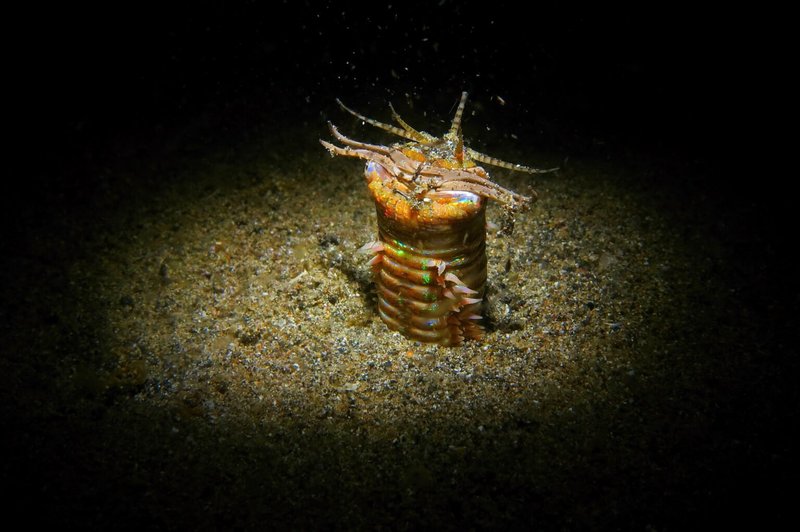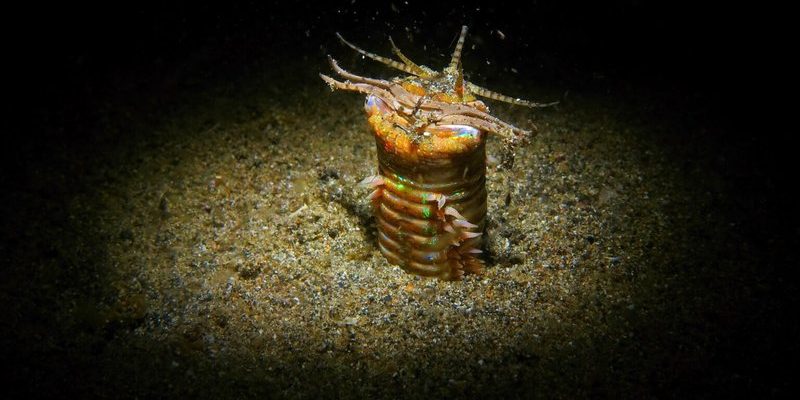
Bobbit worms, scientifically known as *Eunice aphroditois*, are found in tropical and subtropical oceans, often hiding in the sand or mud. They can grow up to 10 feet long, which is a bit mind-boggling. Imagine a creature that can pop out from the sand like a snake, grabbing unsuspecting prey with sharp jaws! But beyond their impressive hunting skills, understanding their lifespan can shed light on their behavior and adaptability. Whether living freely in the ocean or in a controlled aquarium setting, these worms have unique life cycles that reflect their environment.
Understanding Bobbit Worms
To grasp the lifespan of Bobbit worms, it’s essential to know more about them. They’re marine polychaete worms, meaning they belong to a group of segmented worms with bristles called chaetae. These worms are typically burrowers, creating U-shaped tunnels in the sand or mud. When they’re not hiding, they extend their bodies out of the tunnel, waiting for fish or other prey to pass by.
Here’s the thing: Bobbit worms are nocturnal hunters. This means they’re most active at night, which helps them avoid many predators, including fish and other marine animals. They use their sharp jaws to capture prey quickly and efficiently, making them quite efficient hunters. The fact that they can stay hidden for long periods adds to their mystique.
Furthermore, Bobbit worms can regenerate lost segments of their bodies. This ability is crucial given their predatory lifestyle, where they might encounter dangerous situations. If threatened, they can pull back into their burrow or grow back a part of their body that was lost during a fight or an encounter with a predator.
Bobbit Worm Lifespan in the Wild
So, how long do these intriguing worms live in their natural habitat? In the wild, Bobbit worms can live for several years, with estimates ranging from 5 to 10 years. However, this can vary based on factors like food availability, environmental conditions, and predators. The reality is that life in the ocean can be tough, and not every Bobbit worm makes it to old age.
The lifespan can also be affected by their habitat. For instance, those living in areas with rich nutrients and plenty of food might have a better chance at thriving and reaching their maximum age. In contrast, worms in less favorable conditions may not survive as long.
Think about it: the ocean is full of surprises. Even the hardiest creatures face challenges like changes in water temperature, pollution, and predation. Bobbit worms, despite their fierce appearance, aren’t immune to these challenges.
Bobbit Worm Lifespan in Captivity
When it comes to captivity, Bobbit worms often experience a different kind of life. In an aquarium setting, they can live longer, sometimes reaching up to 20 years! This is partly due to a controlled environment where food is readily available, and they’re sheltered from natural predators.
However, keeping a Bobbit worm in captivity involves careful consideration. Aquarium enthusiasts need to provide a habitat that mimics their natural environment, complete with a sandy substrate and hiding spaces. Feeding them a regular diet of meaty foods, like shrimp or fish, is essential for their health.
But don’t be fooled—caring for a Bobbit worm isn’t just about feeding them. They can be a bit unpredictable. If they feel threatened or stressed, they might escape their environment or even die prematurely. So, it requires a dedicated and knowledgeable aquarist to ensure they thrive.
Factors That Influence Lifespan
When we look at both the wild and captivity settings, several factors influence the lifespan of Bobbit worms. Here are a few key points to consider:
- Diet: A well-balanced diet rich in protein can help Bobbit worms grow and live longer.
- Water Quality: In captivity, maintaining appropriate salinity, pH levels, and temperature is crucial for their health.
- Predation: In the wild, Bobbit worms face threats from various predators, impacting their longevity.
- Habitat Conditions: A stable environment with proper nutrients can enhance their chances of survival.
- Stress Levels: Both in the wild and in tanks, stress can significantly affect their lifespan. Keeping them comfortable is essential.
Each of these factors plays a role in whether a Bobbit worm lives to see its full potential. The interesting part is that acute changes in their environment, whether from human activity or natural events, can have immediate effects on their wellbeing.
Behavioral Aspects Related to Lifespan
Bobbit worms are not just fascinating in appearance but also in behavior. Their predatory nature can lead to competitive interactions with other marine life, impacting their survival. In captivity, if placed with species that could harm them or compete for resources, it could lead to premature death.
Moreover, their ability to regenerate is a remarkable aspect of their biology. Regeneration not only allows them to recover from injuries but also plays a critical role in their overall lifespan. Healthy Bobbit worms can regrow segments and adapt to different environments over time, which is essential for longer lives.
Understanding their behavior is crucial. For instance, if a Bobbit worm feels threatened, it may retreat into its burrow, saving itself from harm, which could be a life-saving tactic in the wild. Just like in many species, learning to navigate their surroundings and avoid danger can lead to a longer and healthier life.
In summary, the lifespan of Bobbit worms varies significantly based on their environment. In the wild, they can live around 5 to 10 years, while in captivity, they may thrive for 20 years with proper care. Factors such as diet, water quality, and stress levels play critical roles in determining their longevity.
Whether you’re fascinated by marine life or considering keeping a Bobbit worm as a pet, knowing about their lifespan helps you appreciate these remarkable creatures even more. Their resilience and adaptability remind us of the beauty and complexities of life beneath the waves. So the next time you think about these colorful, elusive predators, you’ll have a deeper understanding of their lives and what it takes for them to thrive.

